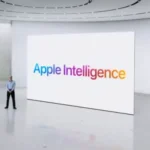Key Points
- Google introduced Willow, which performed a five-minute task that would take 10 septillion years for supercomputers.
- With 105 qubits, Willow is too small for industry-relevant applications. The chip’s reliance on extreme cooling may hinder scalability.
- Google aims to combine practical applications with surpassing classical algorithms.
- Experts agree that Willow marks progress, but real-world utility has yet to be achieved.
Google has introduced Willow, its latest quantum computing chip, which it claims represents a significant leap in quantum technology. Quantum computing, heralded as the next frontier in computing, utilizes qubits capable of simultaneously existing as both zero and one. It promises solutions to problems beyond the scope of classical computers. While advancements like Willow mark progress, experts caution that quantum computing is still far from real-world applications.
Willow’s standout feature lies in its ability to reduce errors exponentially as the number of qubits increases, tackling a long-standing challenge in quantum error correction. Google demonstrated Willow’s power using the random circuit sampling benchmark, achieving a computation in under five minutes that would take today’s fastest supercomputers 10 septillion years. Hartmut Neven, founder of Google Quantum AI, highlighted this achievement as a monumental step in quantum computing.
Despite this, the practical utility of such feats remains questionable. Experts like Winfried Hensinger from the University of Sussex acknowledge Willow’s significance in reducing operational errors but emphasize its limitations. With only 105 qubits, Willow is too small to address industry-relevant problems, as effective quantum solutions require millions of qubits. Additionally, Willow’s reliance on superconducting qubits necessitates extreme cooling, potentially limiting scalability.
Google recognizes these limitations, admitting that the RCS benchmark lacks real-world applications. However, the company aims to bridge the gap by developing algorithms that surpass classical computers while addressing commercially relevant problems.
While challenges remain, experts agree Willow’s unveiling enhances confidence in quantum computing’s future potential. Google’s work contributes to this transformative field’s ongoing excitement and development, bringing humanity closer to realizing practical quantum applications.












